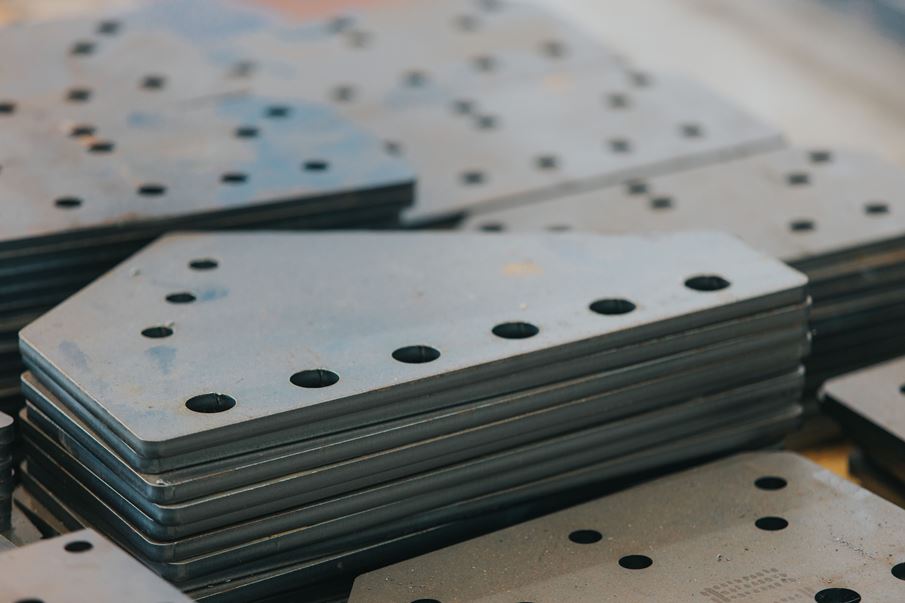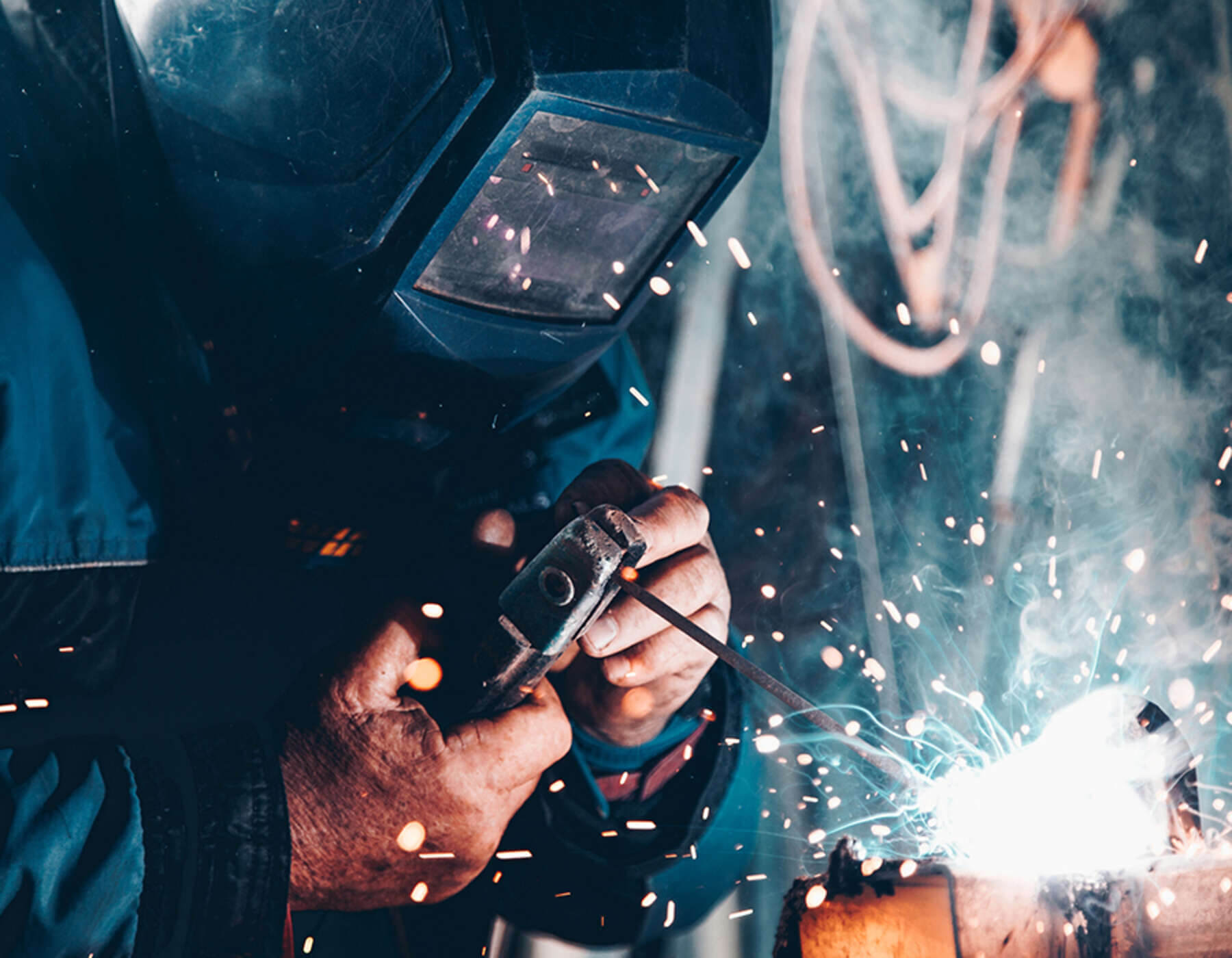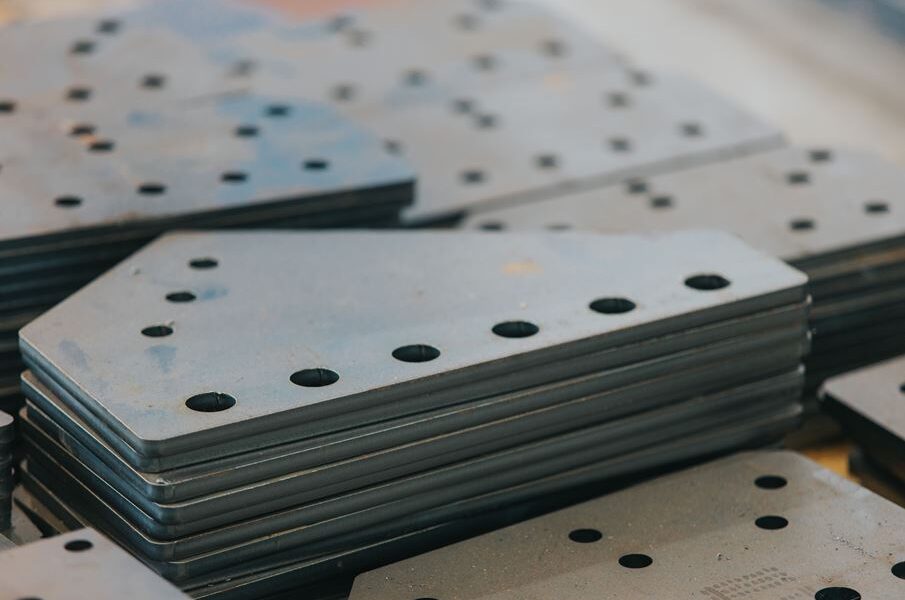
Perforated sheet metal is material sheets that have been mechanically punched or pierced repeatedly to achieve the desired outcome and design.
This fabrication process uses CNC technology and specialist tools and equipment to enable fabricators to create holes of various shapes, sizes, and densities.
This form of punching to create a pattern formation is often seen in the construction and transport industry. However, it is also growing in popularity in architectural designs.
At Morfab, we work across a range of sectors, providing a complete fabrication service, including perforated sheet metal, to meet your needs.
Speak to a member of our team today to find out more.
In this post, we talk about perforated metals in more detail and some of the benefits this fabrication process offers.
Perforated metal explained
Perforating sheet metal can be a hot or cold process:
Hot = pin rollers are heated and produce holes with strength.
Cold = suitable for thinner materials, puncturing the metal to create a volcanic appearance.
The process of achieving perforated metal involves feeding sheet material through an industrial rolling machine. The material is then punched with a series of needles to create holes or stamps, with rotating cylinders moving the sheet metal along.
Some fabricators may also use laser perforation, where a single laser is aligned on the sheet metal with the laser cutting holes in the precise location. Laser cutting is preferred when working with more complex designs or if larger holes are required.
Both of these processes allow for the achievement of different-sized shapes and holes, the most common being round, square, or hexagonal.
Other sheet metal services for perforating sheet metal include plasma, waterjet, and die and punch. The process you use will depend on several factors, and it’s important to work with a professional fabricator to ensure the best and most appropriate solution.
A range of metals are suitable for perforation, including:
Aluminium – a great metal of choice for perforation as aluminium is strong, lightweight, and resistant to corrosion, and it is also heat and chemical resistant. Aluminium is suitable for outdoor use as it is weather resistant, and due to its reflective surface, it is also aesthetically pleasing. An overall versatile sheet metal.
Galvanised steel – due to the protective coating, galvanised steel is corrosion resistant, making it suitable for outdoor use. It is also economical, a good choice for welding, and long-lasting.
Mild steel – strong and versatile, but it will rust over time. Mild steel is also very heavy, which can be both a benefit and a disadvantage. You can paint and weld mild steel, and it is a cost-effective sheet metal.
Stainless steel – a functional sheet metal that is strong and resistant to heat and corrosion. It is also weatherproof and long-lasting, which makes up for it being the most expensive sheet metal compared to its counterparts mentioned above.
Perforated metals are suitable for exterior decoration, balustrading, plant and water filtration, vehicle grilles, guards and screens, air vents, noise reduction, sun reflection, roofing, and more.
CNC machining is a big part of the fabrication process, especially in perforated sheet metal. To find out more about CNC punching, check out our latest post here.
Perforated sheet metal in industry
You will find perforated sheet metal used across numerous industries, such as:
Automotive – great for providing high-quality component parts, as you have the ability to manipulate perforated metals to meet requirements. Suitable for parts that support ventilation, component parts such as speaker grilles, and acting as a mesh in other component areas.
Aerospace—suitable for engine structural designs, perforated sheet metal in this sector is seen as functional, providing much-needed constitutional parts. Opting for lightweight material in this sector is vital, and this type of sheet metal can also provide excellent acoustic absorption components.
Construction – the functional benefits of perforated sheets make them suitable for security purposes in construction and provide practical work uses in building ventilation, noise control, and providing heat and air flow ventilation and protection. Perforated sheets also add aesthetic appeal and can be used as perforated facades, making them suitable for external cladding.
Benefits of perforated metals
Acoustic support – perforated sheets can be used as acoustic screen systems to reflect, absorb, or scatter sound.
Ventilation – the openings in the sheet metal allow airflow, natural light, liquid, and other gases to filter through with ease.
Design features – with the right equipment and an experienced fabricator to perfect the sheet metal fabrication process, you can put images onto perforated sheet metal and bring designs to life.
Perforated sheet metal is also:
- Strong and durable
- Recyclable
- Long-lasting
- Eco-friendly
- Versatile
- Aesthetically pleasing.
However, it’s also important to be aware that perforated sheet metal has some disadvantages. For example, it is not flexible, it is a high-cost material, and this type of sheet metal also has a higher chance of rusting over time.
Sheet metal fabrication near me
Sheet metal fabrication involves precision-driven processes to achieve high-quality outcomes.
At Morfabrication, we have experience working on a range of projects across various sectors, delivering high-quality services and goods at competitive prices.
Contact us today to see how we can help you with your next project.

